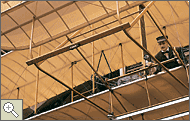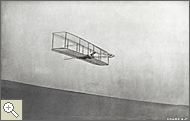
“Stories of the Wrights’ Flight” is part of a series that employs primary sources in the study of historical events. Students compare firsthand accounts of the Wright brothers’ first flights on December 17, 1903, and then compare these to a secondary source, a newspaper story that appeared the next day.
Our definitions of primary source and secondary source are those used by the Smithsonian Archives:
Primary sources are documents or objects created as part of daily life—birth certificates, photographs, diaries, letters, etc.—or reports from people directly involved in the subject.
Secondary sources are documents that interpret, analyze, or synthesize information, usually produced by someone not directly involved in the subject.
The lesson addresses the following standards:
National Standard for History
The student understands the development of technological innovations and the major scientists and inventors associated with them. Therefore, the student is able to identify and describe the significant achievements of important scientists and inventors.
National Standards for Historical Thinking
The student engages in historical analysis and interpretation.
Therefore the student is able to:
1. Consider multiple perspectives in the records of human experience
2. Distinguish fact and fiction by comparing documentary sources on historical figures and events
The student conducts historical research. Therefore, the student is able to:
1. Interrogate historical data
2. Formulate historical questions from encounters with historical documents and other records from the past
3. Obtain historical data from a variety of sources
National Language Arts Standards
Students conduct research by generating ideas and questions, and by posing problems. They gather, evaluate, and synthesize data from a variety of sources (e.g., print and non-print texts, artifacts, people) to communicate their discoveries.
The most important artifact of the Wright brothers’ story, the 1903 Wright Flyer, is the centerpiece of the Smithsonian National Air and Space Museum. To celebrate the centennial of the first flight, the museum will open The Wright Brothers & the Invention of the Aerial Age on October 11, 2003. This sweeping exhibition will include interactive stations, rarely seen photographs, and such artifacts as a Wright-built bicycle and pieces of wood and fabric from the Flyer that were carried to the moon on the Apollo 11 mission. A web version of the exhibition is online at http://www.nasm.si.edu/wrightbrothers.
The exhibition is made possible through the generous sponsorship of Alcoa.
|
 |
 |
 |
 |

Wright Flyer
|
 |
 |

The 1903 Wright Flyer, the most important artifact of the Wright brothers’ story, is the centerpiece of the Smithsonian National Air and Space Museum.
|
 |
 |
 |
 |
 |
 |

Wrights' Glider
|
 |
 |

The 1902 glider
|
 |
 |
 |
|

